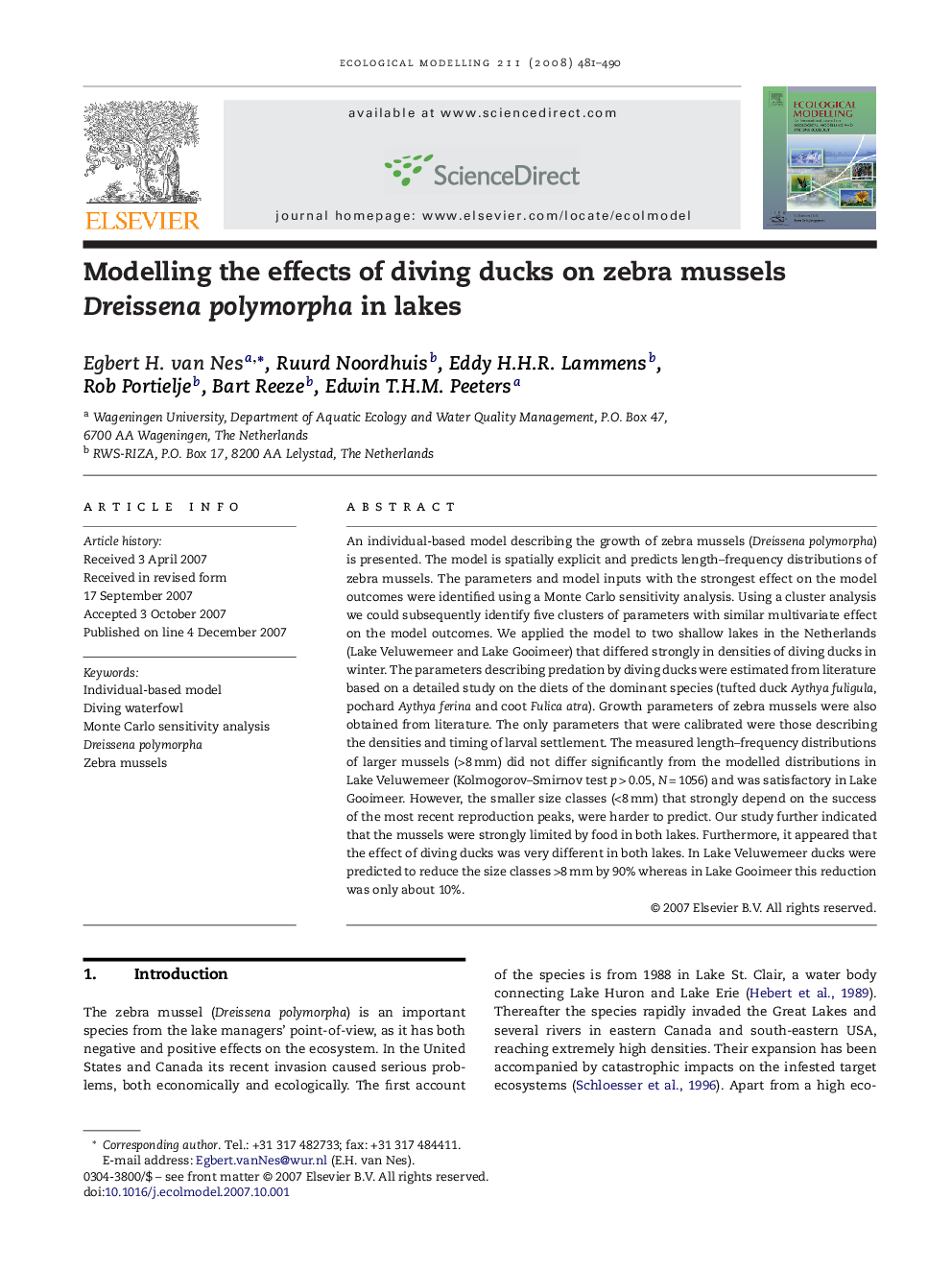| Article ID | Journal | Published Year | Pages | File Type |
|---|---|---|---|---|
| 4378140 | Ecological Modelling | 2008 | 10 Pages |
An individual-based model describing the growth of zebra mussels (Dreissena polymorpha) is presented. The model is spatially explicit and predicts length–frequency distributions of zebra mussels. The parameters and model inputs with the strongest effect on the model outcomes were identified using a Monte Carlo sensitivity analysis. Using a cluster analysis we could subsequently identify five clusters of parameters with similar multivariate effect on the model outcomes. We applied the model to two shallow lakes in the Netherlands (Lake Veluwemeer and Lake Gooimeer) that differed strongly in densities of diving ducks in winter. The parameters describing predation by diving ducks were estimated from literature based on a detailed study on the diets of the dominant species (tufted duck Aythya fuligula, pochard Aythya ferina and coot Fulica atra). Growth parameters of zebra mussels were also obtained from literature. The only parameters that were calibrated were those describing the densities and timing of larval settlement. The measured length–frequency distributions of larger mussels (>8 mm) did not differ significantly from the modelled distributions in Lake Veluwemeer (Kolmogorov–Smirnov test p > 0.05, N = 1056) and was satisfactory in Lake Gooimeer. However, the smaller size classes (<8 mm) that strongly depend on the success of the most recent reproduction peaks, were harder to predict. Our study further indicated that the mussels were strongly limited by food in both lakes. Furthermore, it appeared that the effect of diving ducks was very different in both lakes. In Lake Veluwemeer ducks were predicted to reduce the size classes >8 mm by 90% whereas in Lake Gooimeer this reduction was only about 10%.
